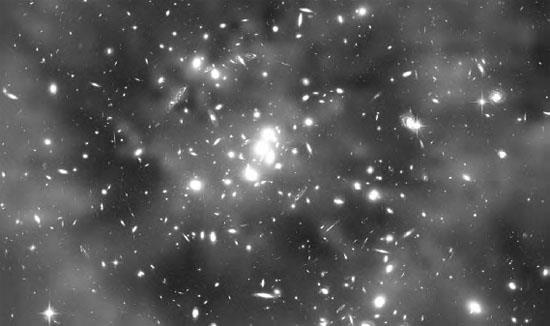Many candidates have been proposed, but there is no agreement at this point. Neutrinos with mass could make up a small portion, as could brown dwarf stars that have failed to ignite. More likely candidates are the supersymmetric particles described above. Much discussion recently has focused on WIMPs, Weakly Interacting Massive Particles. If they exist they would be passing through Earth, and so several experiments are underway to detect them. Early results from one experiment claimed to have detected two particles. Other experiments look for indirect evidence from gamma rays or anti-matter. One result claimed to have found an excess of positrons, but not anti-protons. The composition of dark matter is one of the most active areas of investigation in astrophysics.

This image from the Hubble Space Telescope shows a dark ring surrounding the CL0024 17 region of galaxies. Scientists speculate that the distorted images of these galaxies is a result of dark matter in the ring, which is five hundred million light years wide.

